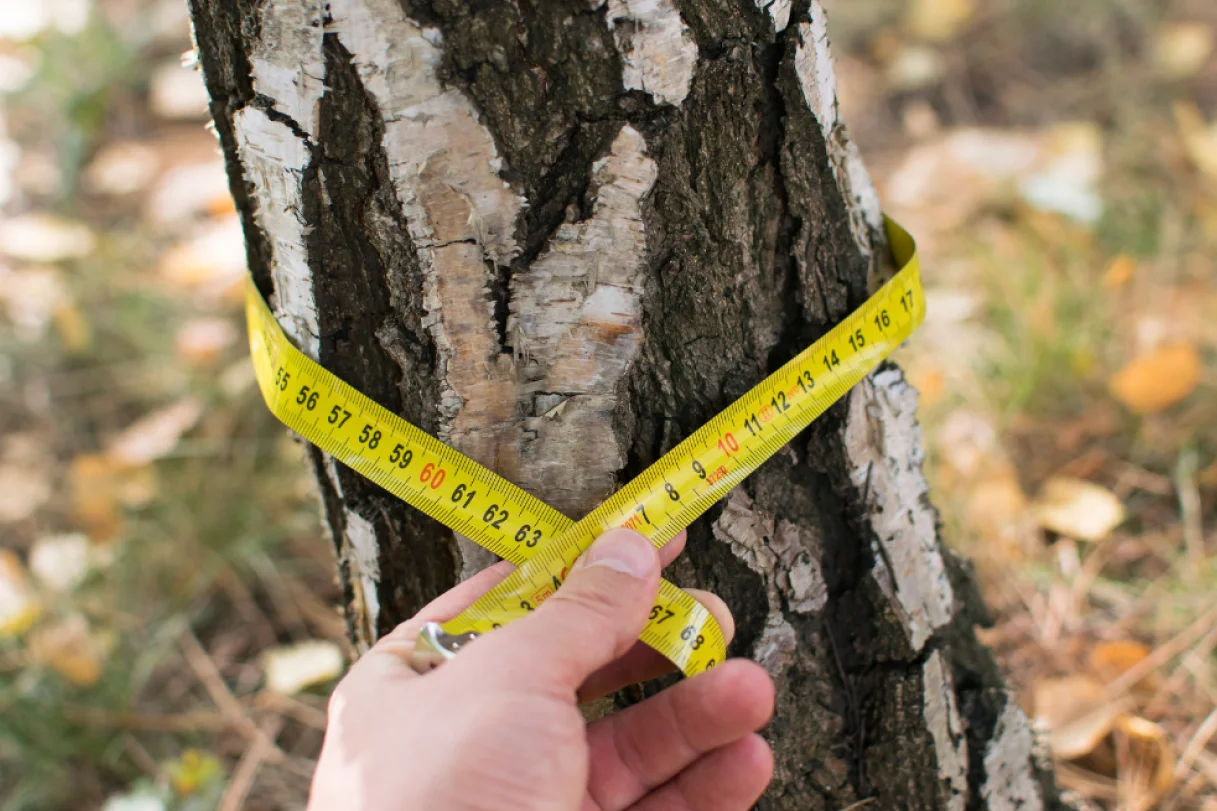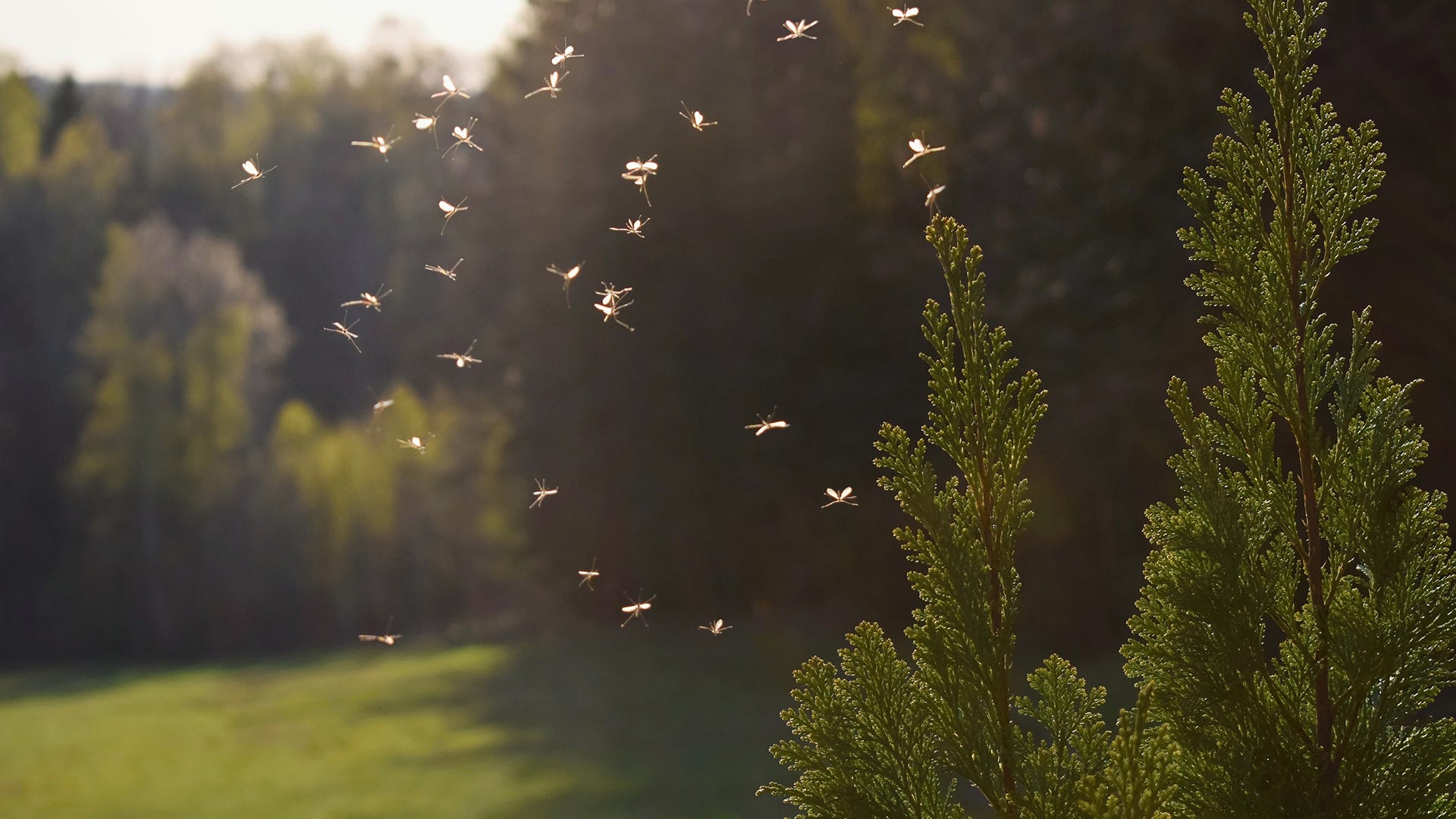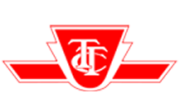A tree diameter calculator helps arborists determine the Diameter at Breast Height (DBH), a key measurement used throughout Canada, particularly in Toronto. DBH refers to the width of the tree trunk measured 1.4 meters above the ground, which is the standard reference height in the city.
Professional Tree Diameter (DBH) Calculator
Using the calculator, arborists can quickly and accurately convert a tree's circumference into its diameter.
This measurement directly informs decisions about pruning, treatment, and removals. For Tree Doctors, DBH measurements form the foundation of every long-term care plan. This data supports proactive maintenance, by-law compliance, and environmental assessments — all of which are crucial for the health of trees and safety of the communities they serve.

Why Tree Diameter Measurement Matters
In the Greater Toronto Area, large trees play a vital role in providing shade, storing carbon, and supporting biodiversity. The larger the DBH, the more value a tree offers in terms of environmental services. Accurately documenting that size ensures that trees are managed respectfully and in accordance with local by-laws.
DBH also plays a direct role in legal compliance. Under the City of Toronto’s Private Tree By-law, any tree with a DBH of 30 centimetres or more requires a permit for removal. The same holds true for any tree located in a ravine or on City-owned land, regardless of size. The Toronto Ravine and Natural Feature Protection By-law specifically protects all trees within ravines, regardless of their size, ensuring the preservation of Toronto’s environmentally sensitive ravine areas. Misjudging a tree’s size could result in legal penalties or permit delays.
From a safety perspective, trees with large diameters carry more weight and may require structural support or more frequent inspections. A precise measurement helps arborists recommend the appropriate interventions.
Tree Doctors uses DBH data in reports, tree inventories, and monitoring programs. It helps our teams assess trends over time, such as declining growth due to root compaction or disease. The tree DBH calculator transforms daily fieldwork into meaningful, science-backed care plans.
Common Tree Species in Toronto and Average Mature DBH
|
Tree Species |
Average Mature DBH (cm) |
Special Considerations |
|
Red Maple |
40–70 |
Common urban species, responds well to structural pruning |
|
White Oak |
60–100 |
High canopy value, long-lived, slower growth |
|
Silver Birch |
30–50 |
Susceptible to bronze birch borer |
|
Norway Maple |
50–90 |
Widely planted, often subject to municipal removal efforts |
|
Eastern White Cedar |
20–40 |
Often multi-stemmed, important for screening/privacy |
How to Measure Tree Diameter at Breast Height
To accurately determine the diameter breast height, certified arborists follow a clear and consistent measurement method. This standardized approach ensures reliability across all tree assessments, which is especially important when complying with municipal by-laws in Toronto.
The term diameter breast height refers to the diameter of a tree measured at 1.4 metres above ground level. This height is chosen because it provides a uniform point on the trunk that is less likely to be affected by root flare, buttressing, or base irregularities.
Here is the step-by-step method:
1. Identify breast height: Measure 1.4 metres from the ground on the uphill side of the tree. This is the height where all measurements should be taken, unless obstructions or deformities require slight adjustment.
2. Measure the circumference: Wrap a flexible measuring tape around the trunk at this height. Ensure the tape is level and tight against the bark, avoiding any slack.
3. Calculate the diameter: Use a tree diameter calculator to divide the circumference by 3.14 (π) or use our DBH calculator at the top of this page. This gives you the diameter at breast height, often abbreviated as DBH.
4. Adjust if needed: For multi-stemmed trees or trunks with irregular shapes at 1.4 metres, measure each stem separately and make a note of any anomalies.
The diameter breast height is a cornerstone metric in arboriculture. It helps arborists assess tree stability, estimate age, determine ecological value, and comply with legal protections. In Toronto, knowing a tree's DBH is essential when applying for permits or planning any site work near protected trees.
 Calculator for Arborists 4.webp)
How DBH Informs Tree Care Decisions
The tree DBH measurement directly influences many aspects of professional tree care. Arborists at Tree Doctors use DBH data to guide pruning strategies, safety interventions, and long-term health planning.
For younger trees with a smaller DBH, pruning tends to focus on shaping and removing competing leaders. For larger trees, the focus shifts to structural stability, deadwood removal, and possibly cabling or bracing.
DBH also informs root care. A mature tree with a large diameter will have a wide-reaching root system. When we plan for excavation, aeration, or planting nearby, DBH tells us how far to set back equipment or hardscape materials.
Tree pest monitoring also benefits from this metric. Certain pests target trees within specific size ranges. For example, emerald ash borer is more likely to infest trees with a DBH above 15 cm. Tree Doctors uses DBH to help set priorities for treatment and inspection.
Finally, DBH is part of every major arborist report submitted to the City of Toronto. Whether we are applying for a permit or documenting a risk assessment, a current and accurate DBH reading is a key part of the process.
Applications of Tree Diameter Measurements
Tree diameter data — obtained through a tree diameter calculator — has numerous real-world applications in Toronto and across Canada.
- Tree protection plans: DBH determines the size of Tree Protection Zones (TPZs), which must be established on construction sites.
- Permit applications: Any tree on private property with a DBH of 30 cm or more requires a permit to remove or injure. DBH data ensures permit documentation is correct.
- Urban forest planning: The City of Toronto and its partners track canopy coverage using DBH-based inventories. This helps inform decisions about replanting, biodiversity, and climate resilience.
- Insurance and property valuation: A large DBH tree adds value to a property but may also carry risk during storms. Accurate data supports fair evaluations.
- Scientific research: Universities and environmental groups use DBH data in studies related to climate change, air quality, and stormwater management.
The tree diameter calculator helps all of these stakeholders — from homeowners to developers to public officials — make decisions rooted in evidence, not guesswork.
 Calculator for Arborists 5.webp)
The Importance of Accurate Tree Measurements
A DBH calculator ensures that tree measurements are not only fast, but precise. That accuracy has real consequences.
An error of just a few centimetres could mean the difference between requiring a permit or not. It could also lead to incorrect assessments of risk, ecological value, or eligibility for protection under City of Toronto regulations.
By using a calculator to standardize measurements, arborists at Tree Doctors reduce human error and improve consistency. We also document how the measurements were taken, including any unusual features such as trunk flare, slope, or multi-stemmed structure.
Our goal is to treat each tree as a living system deserving of careful, respectful attention. Accurate DBH measurement supports that mission by providing a clear, quantifiable view of a tree’s health, age, and structural integrity.
Contact Tree Doctors Today for Expert Tree Care
Whether you’re a homeowner, developer, or municipal official, Tree Doctors uses precise DBH calculations to guide all tree care decisions. Our certified arborists ensure that your trees are properly assessed, documented, and cared for, while always adhering to local regulations.
If you're looking for expert guidance or need help with tree care, don’t hesitate to contact Tree Doctors today. We’re here to provide accurate, science-backed tree assessments that support the health of your trees and the safety of your property.











